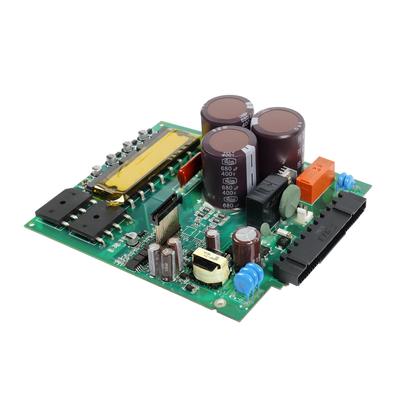Introduction
Surface mount technology (SMT) and through-hole technology are two widely used methods for attaching electronic components to PCBs. SMT involves mounting components directly onto the surface of the board, while through-hole technology requires leads to pass through holes on the board, with soldering done on the opposite side. Both methods have their own advantages and considerations, and the choice between them depends on several factors.
Advantages of Surface Mount Technology (SMT)
Smaller footprint and higher component density
SMT components are significantly smaller than their through-hole counterparts, allowing for a much higher component density on the PCB. This advantage is particularly important when designing compact devices or when board space is limited. The smaller footprint also enables better signal routing and improved electrical performance.
Faster and more automated assembly process
SMT assembly is highly automated, with pick-and-place machines accurately positioning and soldering components onto the board. This automation results in faster production times, higher efficiency, and reduced labor costs. Additionally, SMT allows for simultaneous assembly of multiple components, further enhancing productivity.
Improved electrical performance and signal integrity
SMT components have shorter lead lengths and smaller parasitic capacitance and inductance compared to through-hole components. This leads to lower signal losses, improved high-frequency performance, and better signal integrity. These advantages make SMT a preferred choice for applications requiring high-speed data transmission and miniaturized electronics.
Advantages of Through-Hole Technology
Enhanced mechanical strength and durability
Through-hole components are mechanically secured to the PCB through solder joints that pass through the holes, providing excellent mechanical strength and durability. This makes through-hole technology suitable for applications subjected to mechanical stress or vibrations, such as automotive electronics or aerospace systems.
Easier rework and repair (continued)
This advantage simplifies the rework and repair process, allowing for the replacement of individual components without affecting the entire assembly. Through-hole technology is particularly beneficial when prototypes or small-scale production runs require frequent modifications or updates.
Better heat dissipation
Through-hole components have longer leads that extend through the board, providing a larger contact area for heat dissipation. This makes through-hole technology suitable for applications that generate significant heat, such as power electronics or devices operating in high-temperature environments. The ability to dissipate heat effectively ensures the longevity and reliability of the components.
Factors to Consider When Choosing Between SMT and Through-Hole
When deciding between SMT and through-hole technology, several factors come into play. Consider the following aspects to make an informed decision:
Component size and type
The size and type of components needed for your PCB design will influence the choice of assembly method. SMT is more suitable for smaller components, such as surface-mount resistors, capacitors, and integrated circuits (ICs). Through-hole technology, on the other hand, is better suited for larger components, such as connectors, transformers, and high-power devices.
Cost considerations
Cost is a significant factor in any manufacturing decision. SMT assembly typically has lower material costs due to the smaller components and reduced PCB real estate required. However, SMT assembly may require initial investments in specialized equipment and infrastructure. Through-hole assembly may have higher material costs, but it can be a more cost-effective option for low-volume production runs or when rework and repair are frequent.
Manufacturing volume and time constraints
The manufacturing volume and time constraints of your project will impact the choice between SMT and through-hole technology. SMT assembly is highly efficient for large-scale production runs due to its automation capabilities. It offers faster assembly times and higher throughput. Through-hole assembly, while slower, can be more suitable for low-volume or prototyping scenarios where time is not a critical factor.
Application Considerations
The specific application of your electronic assembly is another crucial factor to consider when choosing between SMT and through-hole technology. Let's explore some application considerations for each method:
High-frequency applications
For applications involving high-frequency signals, such as telecommunications or wireless devices, SMT is often the preferred choice. The smaller component sizes and reduced parasitic capacitance and inductance of SMT components allow for better signal integrity and reduced losses at high frequencies.
High-power applications
In applications that require high-power handling, through-hole technology excels. The larger contact area provided by through-hole components facilitates efficient heat dissipation, ensuring reliable operation even under heavy loads.
Harsh environments
If your electronic assembly will be exposed to harsh environments with extreme temperatures, vibrations, or moisture, through-hole technology may offer greater reliability. The mechanical strength and durability of through-hole connections make them more resistant to environmental stressors.
Industry Trends and Future Outlook
In recent years, surface mount technology has seen widespread adoption in the electronics manufacturing industry. The demand for smaller, more compact devices with improved performance has driven the shift towards SMT. However, it's important to note that through-hole technology still holds relevance in certain applications, particularly those requiring robustness and high-power handling.
Looking ahead, advancements in SMT technology, such as miniaturization and improved manufacturing processes, will continue to push the boundaries of electronic design and assembly. At the same time, through-hole technology will maintain its significance in specific niches where its unique advantages shine.







.gif)